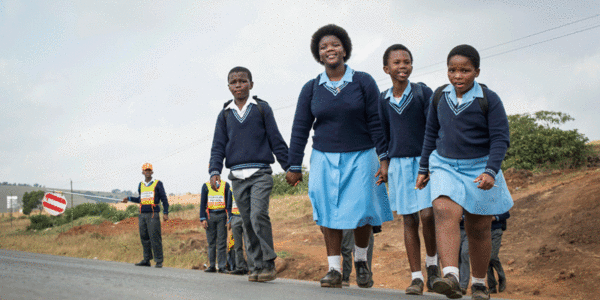Education and good examples play a vital role in influencing safe road behaviour among children from an early age.

Children are easily influenced while young and parents should take advantage of this to teach them road safety rules.
“Children follow the example set by their elders and the behaviour they will themselves display as adults is determined at an early age,” said Elna Fourie, SANRAL Manager: Road Safety Education and Awareness.
The global trend in road safety education and awareness campaigns is to create partnerships between road authorities, law enforcement, civil society and communities in the broader efforts to reduce crashes and the number of fatalities.
SANRAL’s own programmes are in line with the Decade of Action for Road Safety launched by the United Nations and the World Health Organization.
In its objective for “safer road users”, the UN Action Plan calls for increased awareness about road safety risk factors and campaigns that can help change attitudes and opinions.
“Knowledge gives power,” said Fourie. To this end SANRAL has already built a strong partnership with the districts of the Department of Basic Education (DBE), provincial and local transport authorities, as well as individual schools that are part of its ongoing research and road safety education programme.
Teaching road safety to a broader audience
This year will see the roll-out of specially developed teaching aids and course material, which will be supported by workshops and mentoring programmes for teachers. But the aim is to reach a broader audience and include parents – and even grandparents – in the workshops that will be held in the communities around identified schools.
The intention is to equip them with knowledge about the specific road safety risks associated with children – especially as pedestrians and passengers using public transport that ferry them to and from schools.
Once parents are aware of the risks, they will be able to work on their own behaviour and set a good example to learners.
Fourie said SANRAL’s programmes are based on a longitudinal research project that was conducted in communities located close to hazardous locations on the national road network.
This links to an ongoing evaluation of data and feedback from educators and researchers on the impact of programmes.
New learning opportunities for teachers have been developed to reflect the experience gained over the past few years.
The research conducted by SANRAL concluded that road safety is a transversal subject. One of the objectives is to integrate road safety awareness into the broader education curriculum – especially in the later primary and secondary stages.
The education specialists are developing learning opportunities containing road safety messages that can be used in mainstream subjects such as languages, mathematics, science, geography, arts and culture.
“We want to reach a stage where all the information that is offered to learners through teachers, parents, civil society and social media lead to changed behaviour and safer road use,” said Fourie

